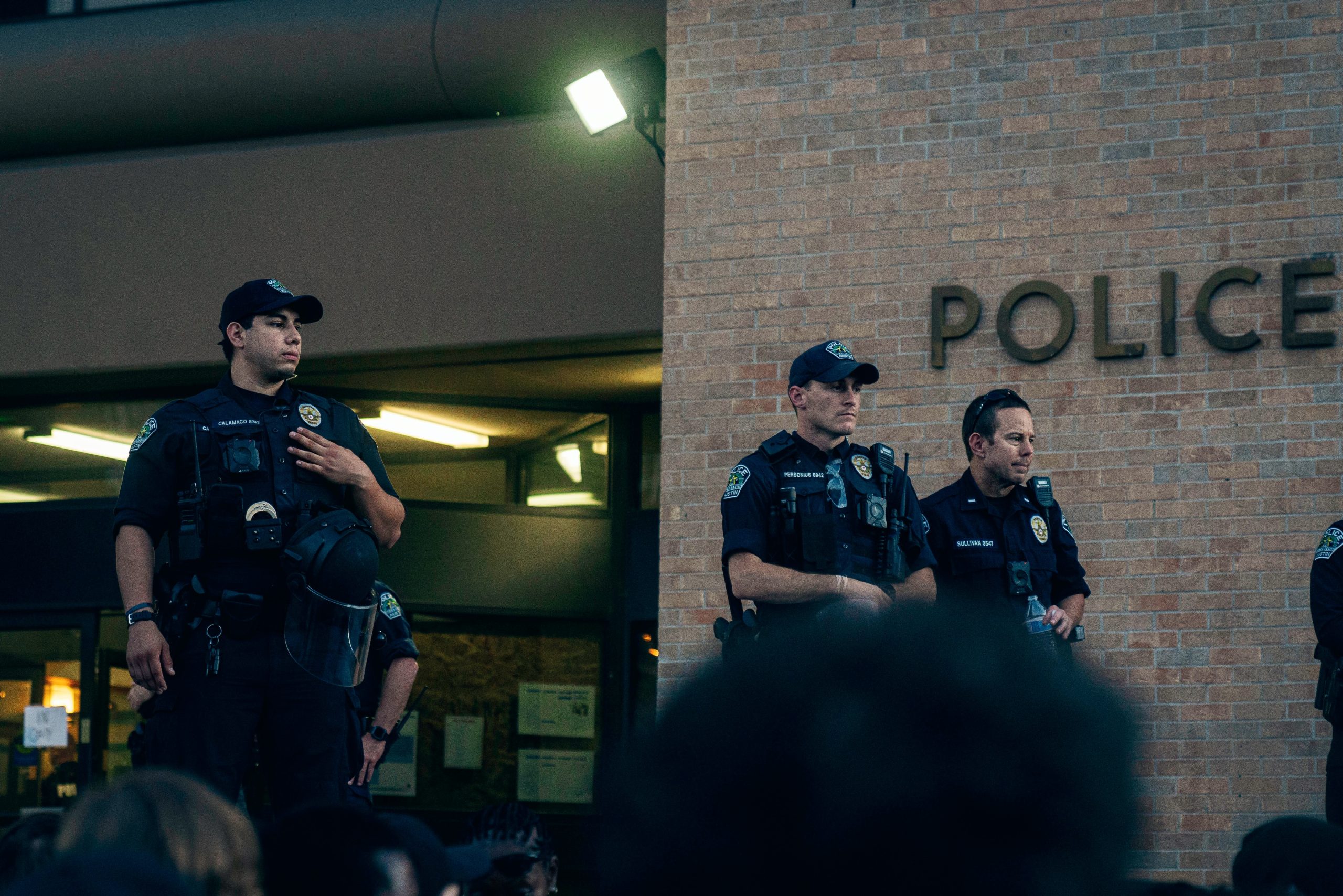Introduction
Employee engagement is crucial for effective, ethical law enforcement. But toxic work environments perpetuated by poor leadership, lack of resources, excessive workloads, and insufficient appreciation quickly kill officer motivation. The downstream impacts of low engagement and morale include absenteeism, citizen complaints, turnover, misconduct, and mental health crises. Responsible leaders must identify and address factors within their control that negatively or positively shape the organizational climate. This guide explores pragmatic strategies for assessing and optimizing your agency’s work environment to reignite personnel passion. Let’s build departments where officers are inspired, not deflated.
Conduct Anonymous Survey Assessments
Surveys provide quantified insights into department culture strengths, weaknesses, and impacts on officer engagement. Benefits include:
-
- Anonymity prompts candid feedback that employees may be reluctant to share publicly.
- Data diagnostics pinpoint specific issues like inadequate staffing, poor leadership, lack of advancement, inadequate training, or bullying.
- Benchmarking progress over time and against industry standards.
- Informing leadership on blindspots between their perceptions and realities.
Keep annual surveys evergreen by incorporating write-in feedback on suggested improvements. Use a platform like Officer Survey that provides turnkey survey templates and analytics. Listen and adjust.
Analyze Performance Metrics
In addition to internal polling, analyze agency metrics that function as diagnostic vital signs. Closely monitor:
-
- Retention rates – high turnover indicates poor engagement. Conduct exit interviews to identify reasons.
- Absenteeism and sick day usage – excess indicates morale issues.
- Citizen complaints – may reveal stresses causing behavioral lapses.
- Disciplinary cases – are certain leaders or units generating more misconduct?
- Response times – delayed responses suggest motivational sinks.
- Clearance rates – are disengaged detectives delaying caseloads?
- Social media posts – low engagement also signals muted motivation.
Operational analytics provide empirical proof of motivational health.
Assess Leadership Impact
Ineffective leadership fast-tracks morale deterioration and disengagement. Warning signs of poor leadership include:
-
- Lack of transparency and communication around agency priorities and changes.
- Failure to accept input, provide autonomy, or delegate authority. Micromanagement.
- Absence of constructive feedback, coaching, and development support.
- Double standards between leadership behavior and frontline expectations. Hypocrisy.
- Insufficient recognition of achievements or punitive cultures of criticism.
- Leaders modeled as authoritarians rather than mentors and stewards.
Audit leadership through anonymous surveys, managerial training assessments, exit interviews, leadership observation ridealongs, and comparing disciplinary rates between units.
Evaluate Resource Needs
Insufficient staffing, outdated equipment, and inadequate facilities signal underinvestment that kills motivation. Ensure resources match operational realities, including:
- Budgeting officer positions at adequate per capita levels based on community populations and call volumes.
- Providing modern, functional patrol vehicles with current tech tools like mobile data terminals. No hand-me-down cars.
- Upgrading antiquated record and data systems prone to crashes and inefficiency.
- Building attractive, sanitary workspaces designed for department needs, not shoehorned into old buildings.
Today’s challenging law enforcement environment demands providing officers every possible advantage through smart resourcing. Don’t penny pinch your personnel’s tools and environment.
**Cultivate a Culture of Appreciation **
Recognition initiatives consistently rank among the highest drivers of morale. Tactics for expressing genuine appreciation include:
-
- Sending handwritten thank you notes from command staff to reinforce positive feedback.
- Sharing success stories in newsletters, social media, and directly with local media contacts. Celebrate wins publicly.
- Holding annual award ceremonies for both traditional accomplishments and creative categories like funniest arrest bloopers.
- Empowering peer-to-peer recognition programs for officers to nominate colleagues for extra praise.
- Maintaining open door policies for community members to share experiences.
- Scheduling optional casual department events like cookouts, sports teams, and picnics to boost familiarity and team spirit.
Gratitude keeps officers going during difficult times. Find both big and small ways to thank your team.
Support Work-Life Balance
Overwork breeds burnout and apathy. To combat fatigue, agencies must:
-
- Review shift schedules that allow sufficient time between rotations for mental recharging.
- Discourage off-hour work communications that prevent detachment.
- Provide flexible arrangements and leave time for family obligations.
- Supply respite rooms for relaxation and informal peer support during long shifts.
- Offer childcare stipends, home meal allowances, and other family resources to ease stresses.
- Make counseling easily accessible and confidential. Remove stigma.
Well-rested officers are more patient, ethical, and engaged on shift and at home. Enable balance.
Keep Officers Mentally and Physically Healthy
Untended trauma, stress, and physical exhaustion cause motivation and performance to nosedive. Best practices include:
-
- Routinely communicating the value of self-care and department wellness resources through roll calls and internal newsletters.
- Contracting with specialized police counselors and therapists to provide confidential support.
- Offering gym stipends, on-site fitness centers, and team sports to encourage healthy lifestyles.
- Providing nutrition guidance to avoid overly caffeinated and fatigued states.
Healthy officers concentrate better on patrol, avoiding motivation lapses. Wellness enables excellence.
Emphasize Continual Growth
Stagnation stifles potential. To feed officers’ growth, implement:
-
- Annual training surveys to identify capabilities and skills personnel want to expand.
- Regular in-service training rotations on emerging issues and required certifications to avoid skill atrophy.
- Tuition reimbursement and incentives for advanced degrees, with incremental pay bumps per new certification.
- Mechanisms for rotational assignments, job shadowing, special projects, and stretch opportunities.
- Clear paths for advancement and transparent promotion criteria.
Investment in professional and personal development demonstrates commitment to personnel. Prioritize growth.
Conclusion
Toxic work environments deflate officer passion and performance. But by surveying personnel, analyzing metrics, evaluating leadership, providing resources, recognizing excellence, enabling balance, supporting health, and emphasizing growth, agencies can optimize organizational climate. Follow these proven strategies starting today – don’t wait for the crisis of low engagement. Your personnel deserve an agency where they are inspired to embody values, serve citizens, and enhance public safety every shift. Their motivation fuels your department’s success. What will you change this week to ensure your agency ignites, rather than extinguishes, the spark within your personnel? Click here to survey your agency.
Frequently Asked Questions
What are the top drivers of low officer motivation?
Research shows the top killers of police motivation are ineffective leadership, lack of discipline and accountability, insufficient staffing and resources, lack of advancement and growth opportunities, poor scheduling and work-life balance, and inadequate transparency and communication.
How can police leaders measure engagement levels?
Leaders can distribute anonymous surveys to gauge morale, analyze internal metrics like retention, absences, complaints, and social media engagement, monitor field response times and clearance rates, and track sick leave usage and disciplinary issues that may indicate motivational issues.
What tactics improve police culture and motivation?
Proven strategies include selecting ethical, supportive leaders; training supervisors in constructive feedback and development; recognizing achievements; investing in officer wellness and counseling; enabling work-life balance through flexible scheduling; providing modern equipment and facilities; offering continual growth opportunities like tuition reimbursement; and giving officers a voice through surveys, committees, and open door policies.
How often should employee engagement be assessed?
Leading police departments assess engagement at least annually through anonymous surveys while continuously monitoring performance metrics that serve as cultural vital signs. More frequent spot checks such as pulse surveys are prudent in times of change or crisis.
How long does it take to improve poor organizational culture?
Typically 12-18 months of persistent, coordinated strategies across leadership, policies, procedures, transparency, communication, and accountability are required to achieve an enduring cultural turnaround. Further years of oversight then maintain the change. It requires long-term commitment.






